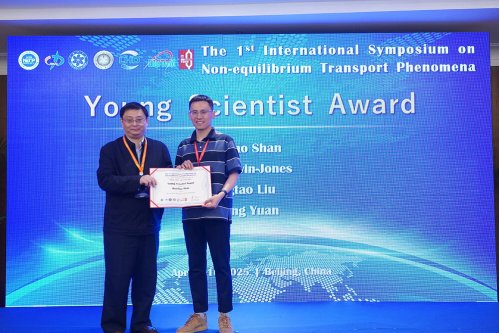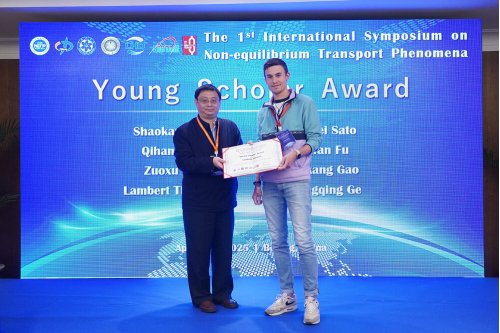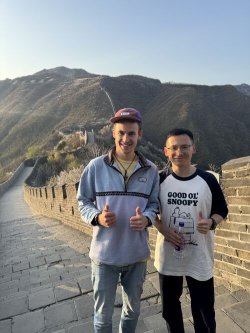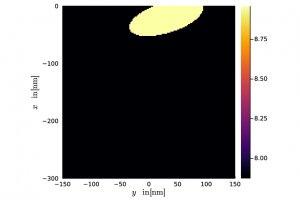Research Highlight 08.25
When gases are far from thermal equilibrium, conventional continuum models fail to accurately describe their behavior. Instead, a kinetic model that describes gases statistically is necessary so that molecular interactions can be taken into account. The Boltzmann equation is the most widely used kinetic model and is typically solved by particle Monte-Carlo methods. These methods offer high physical accuracy but are computationally expensive, especially for near-equilibrium flows, as collisions must be calculated explicitly.
An alternative kinetic model is given by the Fokker-Planck equation, which approximates the Boltzmann equation by modeling the effect of binary collisions as a drift-diffusion process. This approach allows for a more efficient particle method via the underlying Langevin equation, eliminating the need for explicit collision calculations.
To further improve efficiency, we replace the random numbers used in the stochastic diffusion term of the velocity update with quasi-random numbers. Unlike standard pseudo-random numbers, which are scattered irregularly, quasi random number are constructed to fill the space more evenly (see first image). This reduces the statistical noise inherent in particle simulations and allows accurate results to be obtained with fewer particles (see second image).
 This image shows the distribution of points in the unit square. Pseudo-random numbers are scattered irregularly, while quasi-random numbers cover the space more evenly.
This image shows the distribution of points in the unit square. Pseudo-random numbers are scattered irregularly, while quasi-random numbers cover the space more evenly.
 This image shows the error for different moments of the distribution function (energy and stress) during relaxation from a non-equilibrium state to equilibrium. The results demonstrate that quasi-random numbers achieve faster convergence and thus require fewer particles for the same accuracy.
This image shows the error for different moments of the distribution function (energy and stress) during relaxation from a non-equilibrium state to equilibrium. The results demonstrate that quasi-random numbers achieve faster convergence and thus require fewer particles for the same accuracy.
Contact: Lukas Netterdon








 The figure shows relative error of the next higher moment for a range velocity shifts in the bimodal test case. The left part of the figure shows the relative error for even number of moments while the right one shows odd cases. Different plot markers with colors represent the closure. Note, that the Gramian and extended Gramian closure are defined in the even and odd case differently.
The figure shows relative error of the next higher moment for a range velocity shifts in the bimodal test case. The left part of the figure shows the relative error for even number of moments while the right one shows odd cases. Different plot markers with colors represent the closure. Note, that the Gramian and extended Gramian closure are defined in the even and odd case differently. This figure presents the proposed WB method (top row) against the non-well-balanced (NWB) variation (bottom row) and their abilities (or lack thereof) to capture a small perturbation of a steady-state. It is clear that the WB method captures the proper structure of the solution even on a coarse mesh, while the NWB method has smearing of the solution due to numerical error -- even on a refined mesh.
This figure presents the proposed WB method (top row) against the non-well-balanced (NWB) variation (bottom row) and their abilities (or lack thereof) to capture a small perturbation of a steady-state. It is clear that the WB method captures the proper structure of the solution even on a coarse mesh, while the NWB method has smearing of the solution due to numerical error -- even on a refined mesh.







